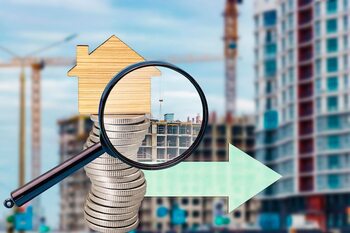Impact of Connectivity on the Value of Urban Communities

Connectivity has become a key factor that determines the value of urban communities. In a world where access to technology and services is vital, well-connected areas not only enhance the quality of life of their inhabitants but also increase their property value. This article explores how digital and physical infrastructure impacts property valuation, providing a clear insight for those looking to invest in the Costa Rican real estate market.
1. Connectivity as a Pillar of Urban Development
Connectivity stands as a fundamental pillar in urban development, as it determines how communities interact and access essential resources. Transportation infrastructure, as well as the telecommunications network, are key elements that facilitate not only the physical movement of citizens but also their access to information and digital services. In this sense, a well-connected community promotes social and economic mobility, resulting in a more dynamic and attractive environment for both residents and investors alike. This increases the demand for properties in these areas, raising their value in the real estate market.
In addition to improving quality of life, connectivity strengthens the social fabric within urban communities. Areas with good communication tend to foster richer interactions among their inhabitants, promoting a sense of belonging and social cohesion. This aspect is crucial for sustainable development, as interconnected communities can respond better to social and economic challenges. Thus, by investing in infrastructure that enhances connectivity—whether through efficient transportation networks or high-speed Internet access—contributions are made not only to the increase in real estate value but also to the overall well-being of its inhabitants.
2. Digital Infrastructure: A New Standard in Communities
Digital infrastructure has become a fundamental pillar for the development of modern urban communities. Nowadays, it is not enough to have a good geographical location; the availability of services such as high-speed internet and reliable mobile networks is essential. These features not only facilitate remote work and access to online education but also allow residents to enjoy a variety of digital services, from smart home applications to entertainment and e-commerce platforms. This digital transformation creates a more attractive environment for families and young professionals, driving demand for properties in these areas.
Additionally, robust connectivity fosters greater social and economic interaction within communities. The ability to access real-time information about local events, job opportunities, or community initiatives strengthens the social fabric and promotes active participation among residents. This not only results in a better quality of life but also contributes to an increase in property values. Communities that invest in digital infrastructure position themselves favorably in the market by attracting new residents and investors interested in a connected and dynamic lifestyle. In summary, digital infrastructure is redefining what it means to live well in contemporary urban environments.
3. Public Transport and its Relationship with Real Estate Appreciation
Public transportation plays a fundamental role in the appreciation of properties within urban communities. Areas with an efficient, accessible, and well-integrated transportation system not only facilitate the daily commuting of residents but also attract potential buyers and tenants. When a property is located near train stations, bus stops, or subway routes, its appeal increases significantly, as residents value the convenience and savings in time and costs associated with private transportation. This proximity can translate into a direct increase in real estate value.
In addition, the interconnection of public transport with other forms of urban mobility, such as bicycles or shared services, promotes a more sustainable and dynamic lifestyle. Communities that prioritize access to collective transport tend to attract a diverse demographic profile, from young professionals to families seeking quality and convenience. This increase in demand for housing in well-connected areas generates a positive effect on local real estate market prices. In this context, investors should consider not only the physical location of a property but also its proximity to effective public transport networks as a key indicator for assessing its long-term economic potential.
4. The Effect of High-Speed Internet on Property Valuation
The availability of high-speed Internet has become a determining factor in the valuation of urban properties. In an environment where telecommuting and online education are increasingly common, homes with fast and reliable connections attract buyers and renters willing to pay more. This connection not only facilitates daily life but also offers job and educational opportunities that were previously out of reach for many. Therefore, communities that invest in digital infrastructure tend to see a significant increase in their real estate value, thus creating a positive cycle where technology drives local economic development.
Moreover, the effect of high-speed Internet access goes beyond mere appeal for property owners; it also influences the overall perception of a community. Well-connected areas are often associated with modernity and progress, which can attract new businesses and investments. This fosters an environment conducive to economic growth, in addition to improving the services available to residents. Ultimately, the presence of a strong digital infrastructure can become a key differentiator within the competitive real estate market, making properties located in these areas preferred options for those seeking quality of life and professional opportunities.
5. Public Spaces and Social Connectivity: How Do They Affect Value?
Public spaces and social connectivity play a fundamental role in the valuation of urban communities. An environment that offers accessibility to parks, squares, and recreational areas not only fosters interaction among residents but also creates a sense of belonging and community. These characteristics are especially attractive to potential buyers and renters, who value the opportunity to enjoy outdoor activities and socialize with their neighbors. Consequently, properties located near these spaces often experience an increase in demand and, therefore, in their value in the real estate market.
Additionally, social connectivity is enhanced by an adequate public transport infrastructure and pedestrian networks. A well-connected neighborhood facilitates movement to work, educational, and commercial centers, which in turn improves the quality of life for its residents. The ease of accessing these essential services not only attracts new residents but also helps keep property prices high. Thus, investing in communities with good physical and social connections can be an effective strategy for those looking to maximize returns on their real estate investments.
6. The New Trends: Smart Cities and Their Economic Impact
Smart cities represent an innovative response to contemporary urban challenges, integrating advanced technology into the planning and management of public services. These connected metropolises allow for better management of traffic, energy, and water resources, which not only optimizes operational efficiency but also enhances the quality of life for their residents. As citizens enjoy faster and more efficient services, a positive effect is generated on the value of local properties, attracting both new inhabitants and investors interested in taking advantage of the benefits that these smart communities offer.
The economic impact of these new trends is undeniable. Cities that implement smart technologies tend to experience sustained growth in their local economies, driven by the creation of technology-related jobs and the increase in tourism due to their innovative infrastructures. Additionally, the improvement in digital connectivity fosters the development of small businesses and local startups by providing them access to technological tools that facilitate entrepreneurship. This virtuous cycle not only elevates real estate value but also establishes an ecosystem where economic opportunities flourish, making these cities attractive destinations for both living and investing.
7. Comparative Analysis: Connected Communities vs. Isolated Communities
The comparative analysis between connected and isolated communities reveals significant differences in various aspects that directly affect their value. Well-connected communities, those with access to high-speed internet, efficient public transportation, and nearby services, offer a more attractive environment for residents. This infrastructure not only facilitates daily life by allowing quick access to information and resources but also fosters greater social interaction and job opportunities. On the other hand, isolated communities often face challenges such as the lack of essential services, which can disincentivize potential buyers and investors, leading to a depreciation in property values.
In addition to the impact on quality of life, connectivity significantly influences the perception of the real estate market. Connected areas tend to experience higher demand due to their convenience and accessibility. This translates into higher prices per square meter and greater property turnover. In contrast, communities lacking adequate infrastructure may suffer from stagnation or even a decrease in real estate value. Therefore, when considering an investment in real estate, it is crucial to evaluate not only the current state of the property but also the level of connectivity offered by the surrounding community, as this will play a decisive role in its future valuation.
8. Future Projections: The Evolution of Urban Connectivity in Costa Rica
The evolution of urban connectivity in Costa Rica is shaping up to be a determining factor in the development of future communities. With the constant growth of technology and digitalization, it is foreseeable that Costa Rican cities will further integrate innovative solutions that facilitate mobility and access to essential services. This includes not only improvements in public transportation and communication networks but also a significant expansion of digital networks that allow citizens to enjoy high-speed internet at all times. The implementation of these technologies not only fosters a more efficient environment but also attracts investments and promotes a dynamic business atmosphere.
As this transformation progresses, it is likely that new valuation methods for urban properties will emerge. Areas with high connectivity will become increasingly desirable, which will directly impact their appreciation. Proximity to tech hubs, interconnected shopping centers, and public spaces designed to facilitate social interaction will be key characteristics that define real estate value. Therefore, buyers and investors will need to consider not only the physical location but also the quality of connectivity when evaluating a property. Thus, Costa Rica positions itself as a benchmark in sustainability and urban modernity, where connectivity will be the fundamental pillar for building prosperous and resilient communities.



